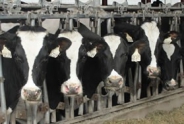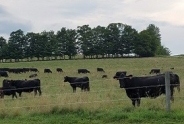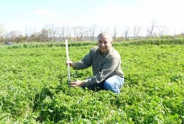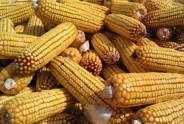Field Crop Update, September 1, 2022
Erik Smith, Area Field Crop Specialist/Team Leader
Central New York Dairy and Field Crops
1. Announcements:
Corn Silage Dry Down Days:
a. GoldStar Feed and Grain, 7593 State Route 20, Sangerfield. Please bring 5-7 stalks of corn from each field you would like to have sampled. John Winchell from Alltech will check DM, Protein, and starch. Lunch provided. Today, September 1, until 2pm.
b. CCE, Richardson Farm, John Brouillette and Mark Smith will be at Richardsons Farm 5959 Skinner road, Vernon center NY at 10 am on Wednesday September 7th to accept your whole plant corn samples. Bring 8 representative corn plants harvested at chopper height (obtained in the morning) from each of the fields you want to test. Please write your name, telephone number, date of planting, day maturity, town and attach to your sample.
Herbicide Resistance Survey: With the recent documentation of evolved herbicide resistance in New York, including Palmer amaranth (glyphosate, ALS-inhibitors), waterhemp (glyphosate, ALS-inhibitors), horseweed (glyphosate, ALS-inhibitors, paraquat), lambsquarters (bentazon), Cornell is looking to get a better feel for the current "state of the state" with respect to herbicide performance and failure. Specifically, we want to survey growers/land managers/crop consultants/extension specialists/industry personnel, etc…, across cropped (e.g. agronomic, vegetable, fruit), ornamental/horticultural (e.g. Christmas tree farms, golf courses), and non-cropped (e.g. industrial, roadsides) systems in NY. This survey is very short and should be QUICK to answer. It is also completely ANONYMOUS. Answers will help Cornell weed scientists plan future research and extension projects.
2. Field Observations
a. I'm seeing a lot of in-field variation in both corn and soy. Early group soybeans are extremely patchy. See this article by Mike Hunter for burndown options in no-till soybeans.
b. Now is the time to also plan for your last alfalfa harvest. If you've taken a cutting in the last week or so, you should get one more. Whether or not we've had a hard freeze (~25F), alfalfa starts to go dormant around mid-October, so harvesting after that should not affect overwintering health. The last thing you want to do is cut and then accumulate less than 200 GDD before crowns go dormant for winter. That will deplete root reserves and leave the crop vulnerable to winter kill. See this article for some more insight into last-harvest timing for alfalfa.
c. The rest of this week's update will focus entirely on corn silage harvest and the associated Growing Degree Day units.
Lots of reports of corn silage crops reaching ~35% whole-plant DM before the kernels seem to have reached full maturity. At this point, there is not much development to be gained if we see a rain event that might otherwise jump-start kernel development. So trust your whole-plant DM and take your crop when it's reached the target ~35%.
Regarding GDD, nearly every location in our region has experienced at- or near-record GDD since silking, especially crops that silked the last week of July (after July 23rd). Coupled with the recent dryness, many crops are ready to be chopped as we speak.
Check your silage crops' whole plant dry matter to make sure you're ready to harvest - your crop may be ready before you know it! See our recent emails regarding Corn Plant Dry Down and Kernel Processing. A reminder from Joe Lawrence (PRO-DAIRY):
"The status of the corn crop is highly dependent on where you are in the state this year but in areas with drought stress (but not complete plant death from drought) it will be really important to watch kernel maturity in combination with whole plant dry matter. In these fields the plants look pretty ugly but the kernels continue to attempt to mature. You will see in the attached that the year and health of the plants makes a difference in how much ear DM contributes to whole plant DM vs. stover DM. For this droughty scenario this could look more like the data from 2019 where the plants are not healthy and therefore contribute slightly more to whole plant DM but ear DM is still driving the dry down process and patience is needed to allow this to happen: See full article here.
And to assess the effectiveness of this year's nutrient plan, see this factsheet and this factsheet on the Corn Stalk Nitrate Test.
3. Growing Degree Days as of Aug 31st: See: Climate Smart Farming Growing Degree Day Calculator
Growing degree days (GDD) are calculated by taking the average daily temperature and subtracting the base temperature for development of a given organism ((High + Low)/2 - base temp = GDD). For corn silage, we are using base 50/86, as corn development starts at 50 degrees F and ceases above 86. Check your location, planting date, and silking date. Silage corn needs 750-800 GDD (depending on hybrid maturity) after silking to reach a whole plant DM of 32%. Under typical late season dry down conditions we can expect the crop to reach 35% DM four to seven days later (Remember that we can expect to accumulate 20-25 GDD per day, or even up to 30, so this is not a large window). For more details, see this article. No matter what the numbers say, always check your crop to see how close you may be to harvest:

Blue: Time to make plans (35% DM anywhere between 5 - 11 days from now, depending on maturity)
Green: Gas up the harvest and the trucks (35% DM in 2 - 8 days, depending on maturity)
Yellow: See you in the field (35% in less than a week)
Red: It's already in the bunk or it's goin in the bin or for high-moisture corn (DM likely > 30-40%)
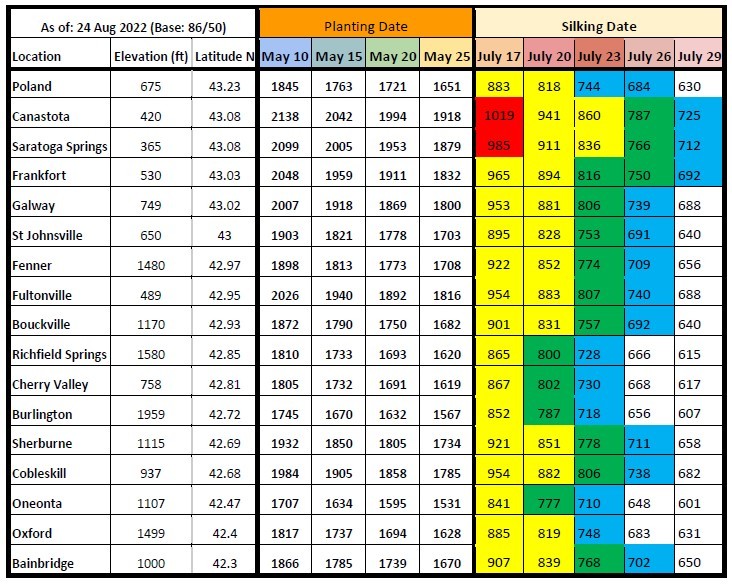
Field Crop Update, September 1, 2022 (pdf; 462KB)
Upcoming Events
Labor Roadshow IX
December 1, 2025
December 9 - December 10, 2025December 17 - December 18, 2025December 22, 2025
In-person and online events to keep NY's agricultural employers informed and prepared for today's labor challenges.
Inspired by Annie's: How to Be a Strong Woman Farm Manager
December 10, 2025
December 17, 2025
Free webinars geared towards women who own or operate a farm in NYS.
2026 Dairy Day
January 13, 2026 : Dairy Day - Hamilton
Hamilton, NY
Lunch included
January 14, 2026 : Dairy Day - Ballston Spa
Ballston Spa, NY
Lunch included
Announcements
Statewide Field Crop Pathology Needs Assessment Survey
Your input is wanted for identifying priorities!Sign Up for Our Weekly E-Newsletter
We send out a bi-weekly e-newsletter that has announcements, upcoming programs, and opportunities for you! Registration is quick, easy, and free. Click here to sign up today!Farmers Can Join MeatSuite For Free!
MeatSuite.com is a free resource provided by Cornell University where NY meat farmers can create a farm profile and list their bulk (wholes, halves, quarters) and bundled (i.e. Grilling Bundle) meat products.Why should farmers join?
1. It's free and easy!
2. Connect with more local customers. In the past year the MeatSuite.com farm directory had 8,300 visits from New York consumers. Farm profiles get as many as 25 views per month from potential local customers. We also spotlight MeatSuite farms on social media and bring attention and purchases to farms through highlights and giveaways.
How do I join?
Farmers can visit https://www.meatsuite.com/farmers/ to create a free farm profile. You must list at least one product for your farm's profile to go live. You'll also have access to Cornell's free Meat Price Calculator, a helpful tool for pricing your meat to make a profit.
While you're on MeatSuite, check out the "Creating Consumer-Friendly Bulk Meats" publication on the log-in page. It has tips on how to create bulk meat products that are easier for first-time buyers to say "yes" to.
If you have any questions as you create your farm profile or products, we're here to help! Please email Matt LeRoux at mnl28@cornell.edu.

